NASA Scientists Help Probe Dark Energy by Testing Gravity
Monday, 29 August 2022 13:26 Could one of the biggest puzzles in astrophysics be solved by reworking Albert Einstein's theory of gravity? A new study co-authored by NASA scientists says not yet.
The universe is expanding at an accelerating rate, and scientists don't know why. This phenomenon seems to contradict everything researchers understand about gravity's effect on the cosmos: It's as if you threw an apple in the
Could one of the biggest puzzles in astrophysics be solved by reworking Albert Einstein's theory of gravity? A new study co-authored by NASA scientists says not yet.
The universe is expanding at an accelerating rate, and scientists don't know why. This phenomenon seems to contradict everything researchers understand about gravity's effect on the cosmos: It's as if you threw an apple in the Energy particle detector helps Shenzhou-14 crew conduct EVAs
Monday, 29 August 2022 13:26 The energy particle detector deployed on Wentian, the first lab module of China's space station, will help the Shenzhou-14 crew members carry out extravehicular activities (EVAs), according to the China Manned Space Agency (CMSA).
The Wentian module has been operating stably in orbit for nearly a month, and the Shenzhou-14 crew have been training and preparing for their first EVAs during t
The energy particle detector deployed on Wentian, the first lab module of China's space station, will help the Shenzhou-14 crew members carry out extravehicular activities (EVAs), according to the China Manned Space Agency (CMSA).
The Wentian module has been operating stably in orbit for nearly a month, and the Shenzhou-14 crew have been training and preparing for their first EVAs during t AI illuminates permanently shadowed regions on the moon
Monday, 29 August 2022 13:08
With the help of artificial intelligence, an international research team led by ETH Zurich has explored the moon's permanently shadowed regions. The information they have obtained about the area's surface properties will help to identify suitable locations for future lunar missions.
It was 1972 when the last humans landed on the moon. The Apollo program was discontinued thereafter. But interest in the moon has been rekindled. With China having landed a robot—and raised its flag—on the far side of the moon in 2020, NASA is planning for its Artemis program to land in the lunar south pole region, probably between 2025 and 2028.
Engine problem leads NASA to scrub launch of new moon rocket
Monday, 29 August 2022 12:09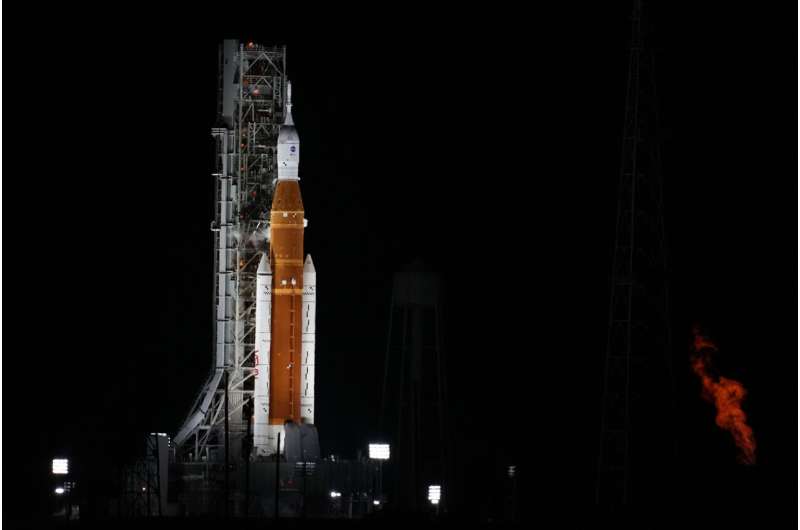
A fuel leak and then an engine problem during final liftoff preparations led NASA to call off the launch of its mighty new moon rocket Monday on its debut flight with three test dummies aboard.
The next launch attempt will not take place until Friday at the earliest and could be off until next month.
NASA scrubs launch of new moon rocket after engine problem
Monday, 29 August 2022 12:09
A fuel leak and then an engine problem during final liftoff preparations led NASA to call off the launch of its mighty new moon rocket Monday on its debut flight with three test dummies aboard.
The next launch attempt will not take place until Friday at the earliest and could be off until next month.
First Artemis 1 launch attempt scrubbed
Monday, 29 August 2022 11:48
NASA scrubbed the first attempt to launch its Space Launch System rocket and Orion spacecraft Aug. 29 after a problem with a hydrogen bleed line with one of the rocket’s four core stage engines.
China plans to make aging Long March rocket reusable and non-toxic
Monday, 29 August 2022 10:08
China’s main space contractor plans to revamp a highly successful, 30-year-old Long March rocket model to adapt to the trend towards reusability in the launch sector.
NASA shoots for the Moon, on its way to Mars
Monday, 29 August 2022 05:50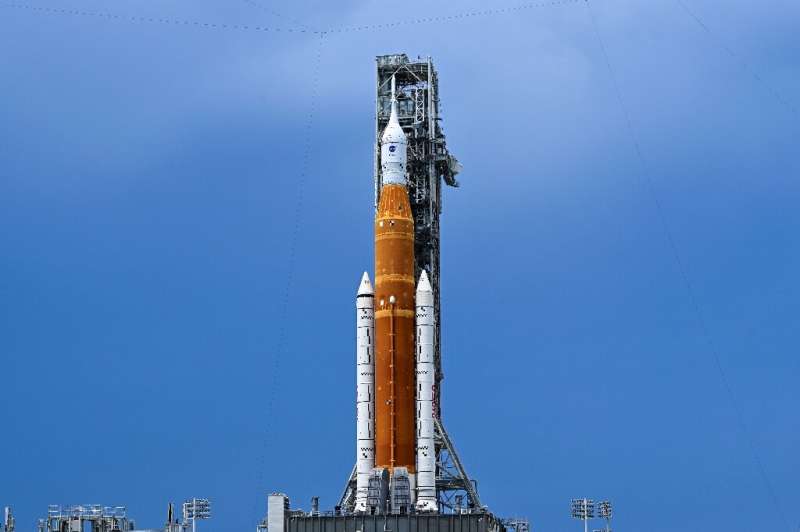
NASA's most powerful rocket yet is set to blast off Monday on the maiden voyage of a mission to take humans back to the Moon, and eventually to Mars.
Fifty years after the last Apollo mission, the space program called Artemis is to get under way with the blast off of the uncrewed 322-foot (98-meter) Space Launch System (SLS) rocket at 8:33 am (1233 GMT) from the Kennedy Space Center in Florida.
NASA fuels moon rocket for liftoff on 1st test flight
Monday, 29 August 2022 05:46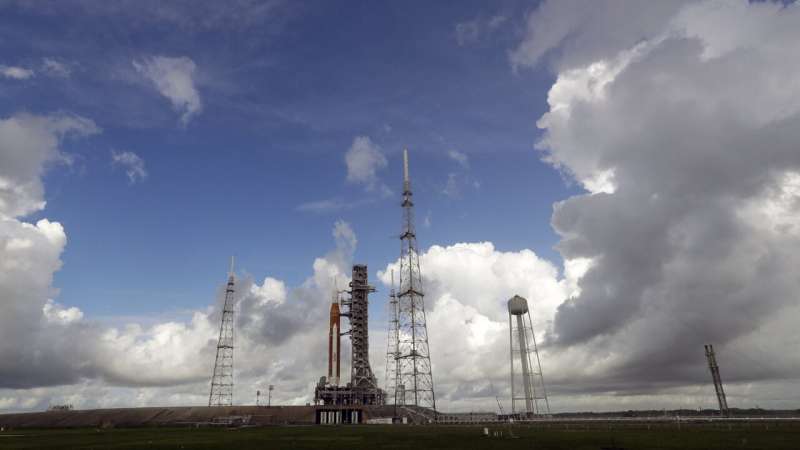
NASA began fueling its new moon rocket early Monday for liftoff on a test flight to put a crew capsule into lunar orbit for the first time in 50 years.
Thunderstorms delayed the fueling operation by an hour. The threat of lightning diminished enough to allow the launch team to proceed with loading the rocket's tanks.
Fuel leak interrupts launch countdown of NASA moon rocket (Update)
Monday, 29 August 2022 05:46
NASA began fueling its new moon rocket early Monday for liftoff on a test flight to put a crew capsule into lunar orbit for the first time in 50 years.
Thunderstorms delayed the fueling operation by an hour. The threat of lightning diminished enough to allow the launch team to proceed with loading the rocket's tanks.
Fuel leaks threaten to delay launch of new NASA moon rocket (Update)
Monday, 29 August 2022 05:46
NASA began fueling its new moon rocket early Monday for liftoff on a test flight to put a crew capsule into lunar orbit for the first time in 50 years.
Thunderstorms delayed the fueling operation by an hour. The threat of lightning diminished enough to allow the launch team to proceed with loading the rocket's tanks.
Webb inspects the heart of the Phantom Galaxy
Monday, 29 August 2022 03:00
New images of the spectacular Phantom Galaxy, M74, showcase the power of space observatories working together in multiple wavelengths. In this case, data from the NASA/ESA/CSA James Webb Space Telescope and the NASA/ESA Hubble Space Telescope compliment each other to provide a comprehensive view of the galaxy.
SLS ready for long-delayed first launch
Sunday, 28 August 2022 20:42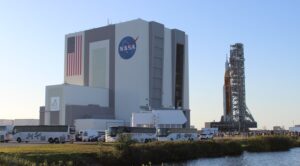
A launch vehicle in development for more than a decade is now less than a day from attempting to lift off for the first time on the Artemis 1 mission.
The post SLS ready for long-delayed first launch appeared first on SpaceNews.
NASA moon rocket on track for launch despite lightning hits
Sunday, 28 August 2022 20:39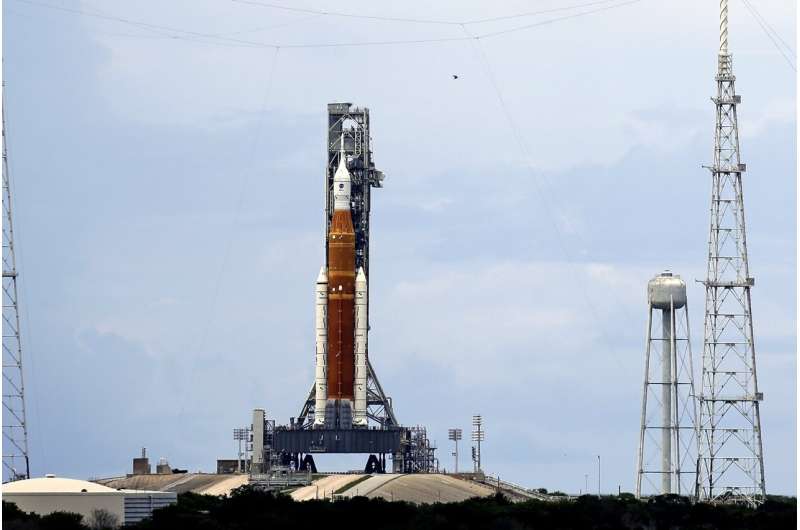
NASA's new moon rocket remained on track to blast off on a crucial test flight Monday, despite a series of lightning strikes at the launch pad.
The 322-foot (98-meter) Space Launch System rocket is the most powerful ever built by NASA. It's poised to send an empty crew capsule into lunar orbit, a half-century after NASA's Apollo program, which landed 12 astronauts on the moon.
Terran Orbital concludes final launch preparations for LunIR
Sunday, 28 August 2022 12:21 Terran Orbital Corporation (NYSE: LLAP), a global leader in satellite solutions, primarily serving the United States and Allied aerospace and defense industries, has concluded final launch preparations for LunIR. The groundbreaking lunar satellite will launch aboard NASA's Space Launch System (SLS) as part of the Artemis I mission. The rocket is set to launch from Kennedy Space Center on August
Terran Orbital Corporation (NYSE: LLAP), a global leader in satellite solutions, primarily serving the United States and Allied aerospace and defense industries, has concluded final launch preparations for LunIR. The groundbreaking lunar satellite will launch aboard NASA's Space Launch System (SLS) as part of the Artemis I mission. The rocket is set to launch from Kennedy Space Center on August 